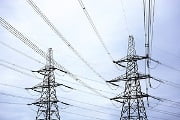The Angolan government is getting serious about expanding electrification rates in the southern African country and will seek to increase power generation from 38% to around 60% under its “Angola Energy 2025 Vision.”
During the Powering Forward: The Pathway to Grid Stability, Increased Capacity and a Diversified Angolan Economy’ webinar hosted by Africa Oil & Power,best replica watches panelists discussed the role of multilateral organizations and financial development institutions in driving Angola’s energy expansion. The opportunities in transmission, distribution and generation were also outlined, as was the role renewable energy and gas to power projects can play in increasing the country’s electrification goals.
“The Angolan government, along with multilateral donors and some bilateral donors, has invested a lot in generation,” said Paul Ghiotto, Deputy Political-Economic Chief/Energy Officer Political-Economic Section, U.S. Embassy Luanda. “The Ministry’s plan for electrification not only aims to go from 38% to around 60% by 2025, but it also aims to go from around less than three gigawatts (GW) of installed generation to approximately 9 GW by the end of the same period. We do not know if we will get to 9 GW, but through the development of hydropower in the Kwanza river basin, Angola has a very strong base of generation sufficient to meet future demand, even projected until to 2030. There are also additional opportunities in generation, I would argue in gas-to-power, and particularly renewables in the solar sector.”
In addition to government funding, the country is eager to attract private sector investment into its most bankable power projects, specifically in distribution to end users.
“You cannot expand the industrialization of the country without secure power throughout,” said Maria da Cruz, President & CEO of U.S.-Angola Chamber of Commerce. “The government of Angola has invested in the economy with the Angola Energy 2025 agenda, which is robust and seeks to invest in the energy sector. There is an estimate of around $23 billion that the government would like to invest as part of the Angola Energy 2025 strategy, and it is going to need support from the private sector.”
“Angola already has a clear view of its transmission, generation and distribution sectors, which enables its Power Sector Reform Support Program,” said Frederico Martins Correia, Energy, Resources & Industrials Partner, Deloitte. “The law and regulation has been improved so that the private sector can enter, in addition to the public sector. In terms of distribution, it is quite easy to create a company and be a player, and the government is very keen to create distribution companies locally. In transmission, the vision is to provide more services or exploration and product-sharing contracts, and not to be a player. The vision for the government is to keep transmission as a state-owned part.”

